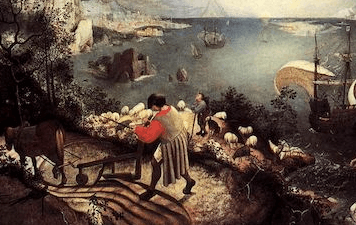How to Speak Art: Understanding Its Language, Issues, and Themes

Understanding the language of art requires an examination of its multifaceted elements, including symbolism and visual metaphors, as well as the diverse perspectives of its audience. Engaging with pertinent issues such as cultural appropriation and accessibility can significantly enhance our appreciation of art, while recurring themes like cultural identity and political critique invite deeper reflection. As we unpack these layers, the conversation can evolve into a collective exploration of how art resonates emotionally and intellectually, prompting us to consider what it truly means to connect with artistic expression on a more profound level.
The Language of Art
In the realm of visual expression, the language of art transcends mere words, serving as a complex system of symbols and meanings that invite deeper contemplation.
Art symbolism and visual metaphors empower artists to convey profound ideas, emotions, and societal critiques. Understanding this intricate language fosters a sense of freedom, enabling viewers to engage with and interpret artworks through their unique experiences and perspectives.
See also: Housedecorideas.Net How to Design a Logo: Mastering the Art of Brand Identity
Key Issues in Art
Amid the evolving landscape of contemporary art, key issues emerge that challenge both artists and audiences to reconsider the role of art in society.
Cultural appropriation raises ethical questions, while art accessibility fosters inclusivity.
Additionally, the environmental impact of artistic practices prompts reflection on sustainability.
Social commentary remains vital, urging artists to address pressing societal concerns, ultimately redefining art’s potential for transformative dialogue.
Recurring Themes Explored
Recurring themes in art frequently serve as a lens through which societal issues and human experiences are examined.
Artists explore cultural identity, weaving personal narratives into social commentary and emotional expression. Political critique emerges alongside environmental concerns, reflecting an artistic evolution rooted in historical context.
These recurring themes challenge viewers to engage with the complexities of life, fostering a deeper understanding of our shared humanity.
Enhancing Your Art Conversations
Art conversations can often feel daunting, yet they represent a vital opportunity for connection and insight.
Engaging in dialogue about artistic expression enhances our understanding of visual storytelling, cultural influences, and emotional resonance.
Conclusion
In the realm of art, understanding transcends mere observation; it becomes a symphony of voices and ideas. Navigating its intricate language reveals the depth of cultural narratives and the weight of societal critique. By engaging with key issues and recurring themes, the dialogue transforms, illuminating the shared human experience. This collective journey fosters not only appreciation but also a profound connection to the essence of creativity, inviting all to partake in the vibrant tapestry that art weaves.




